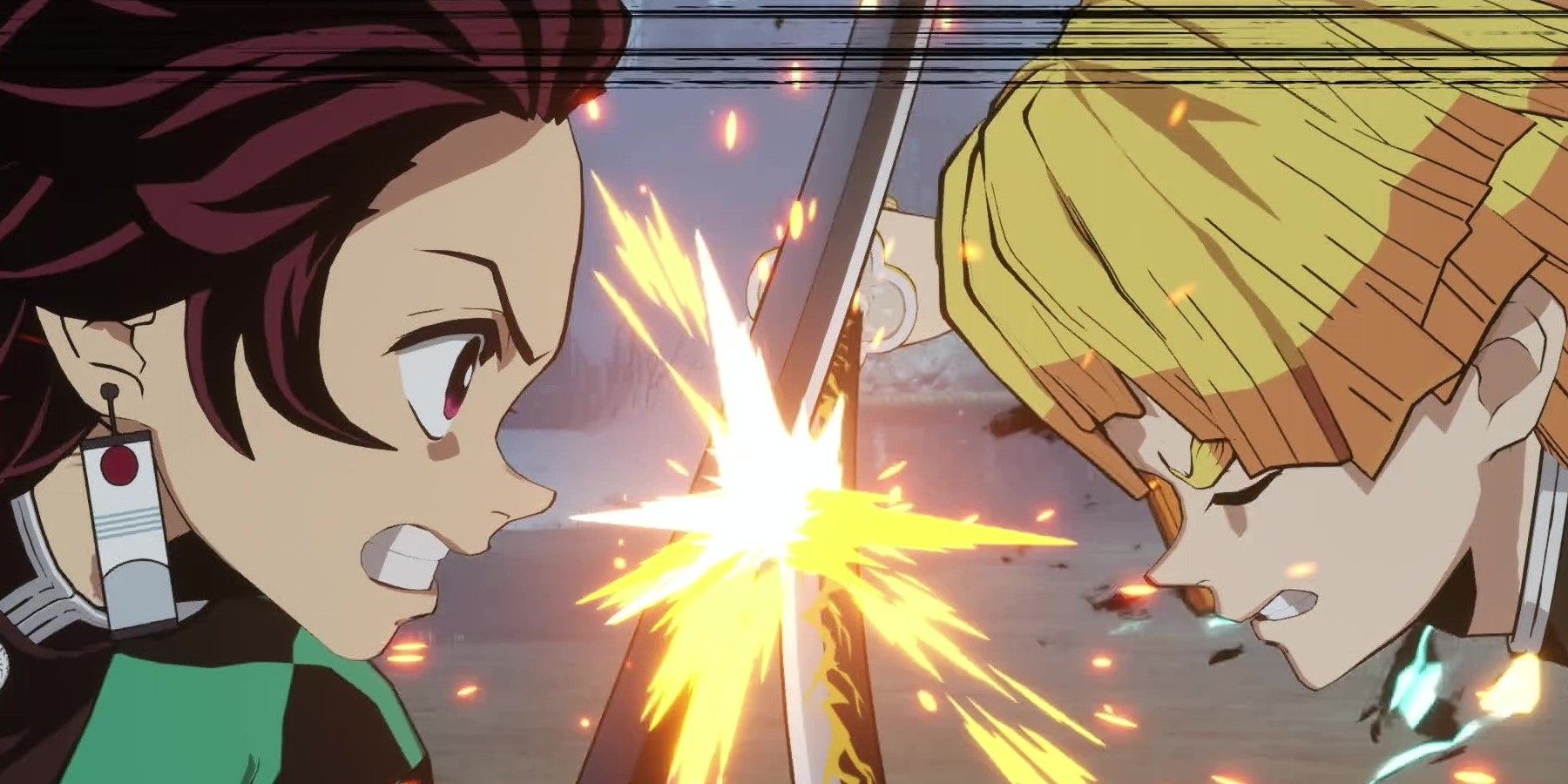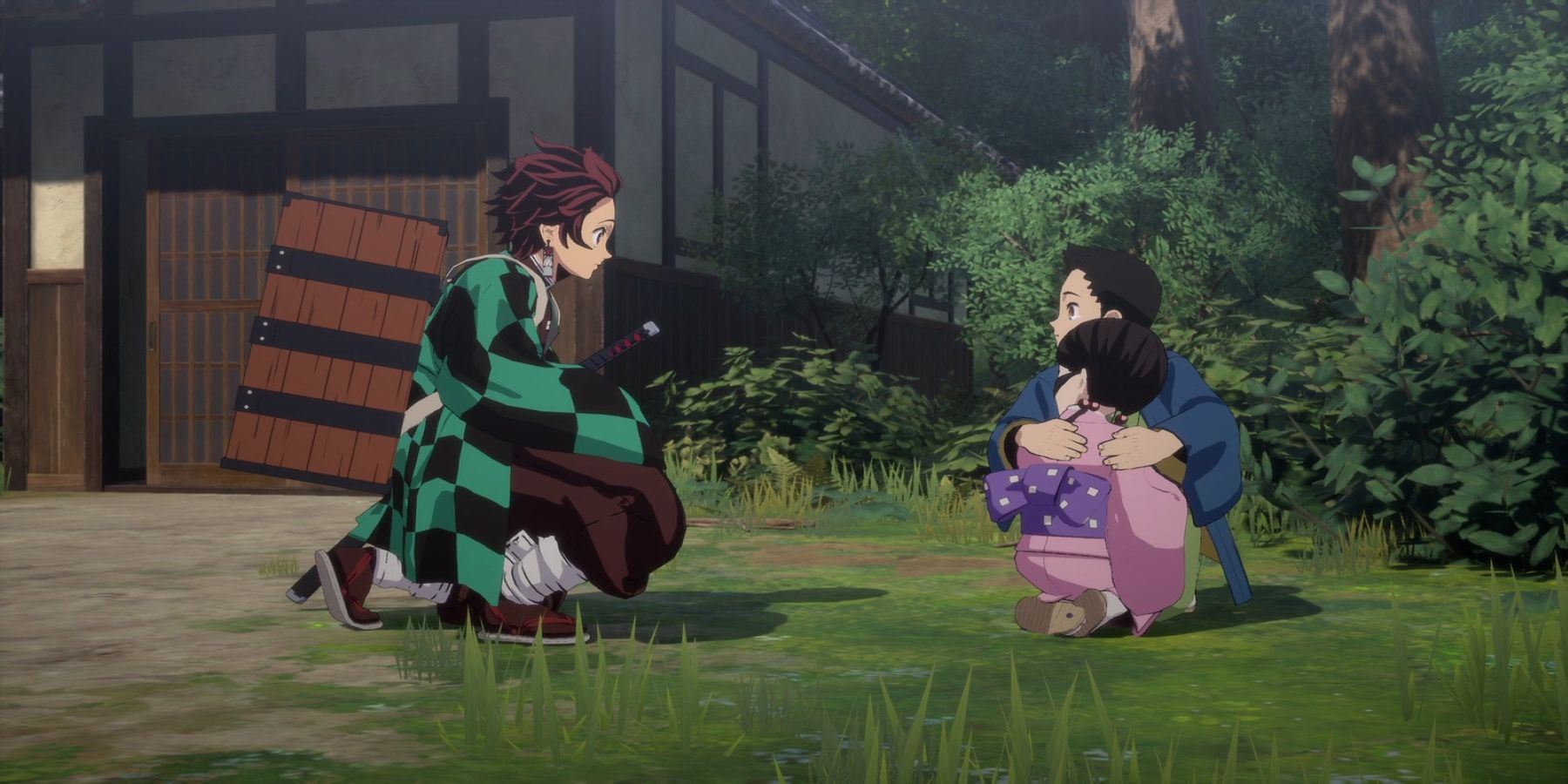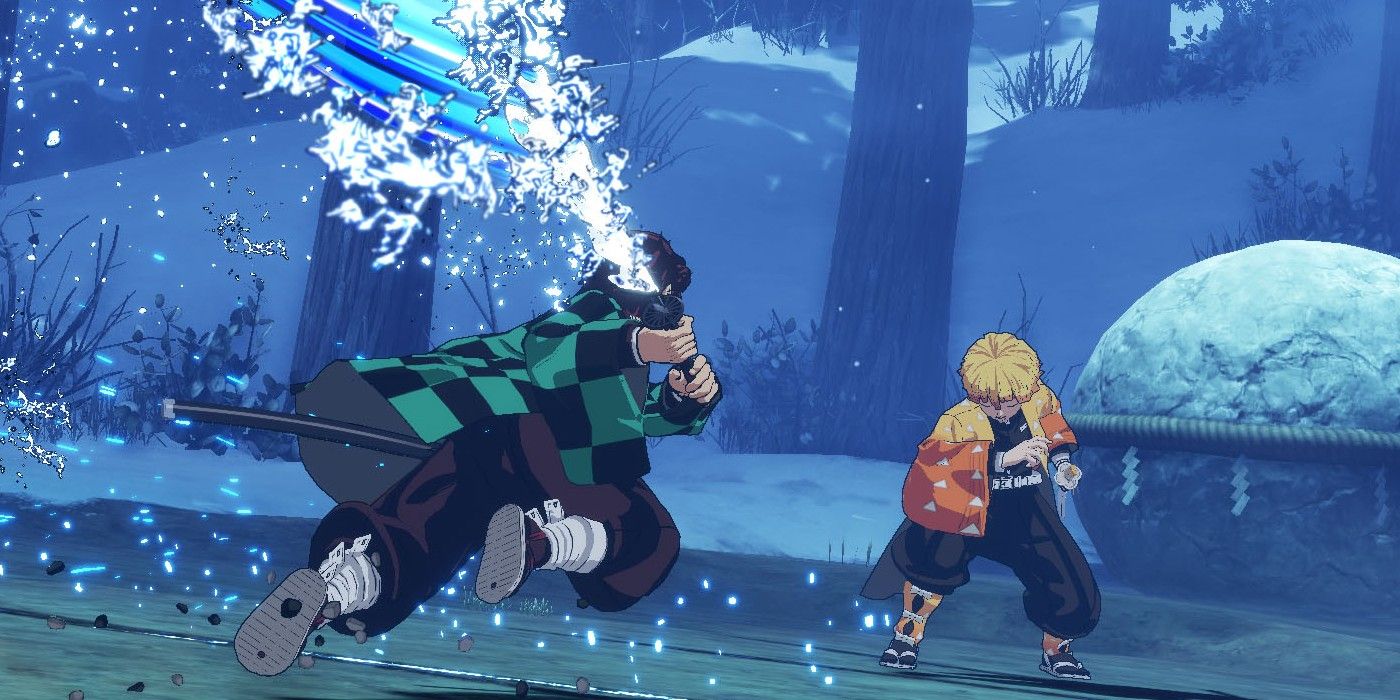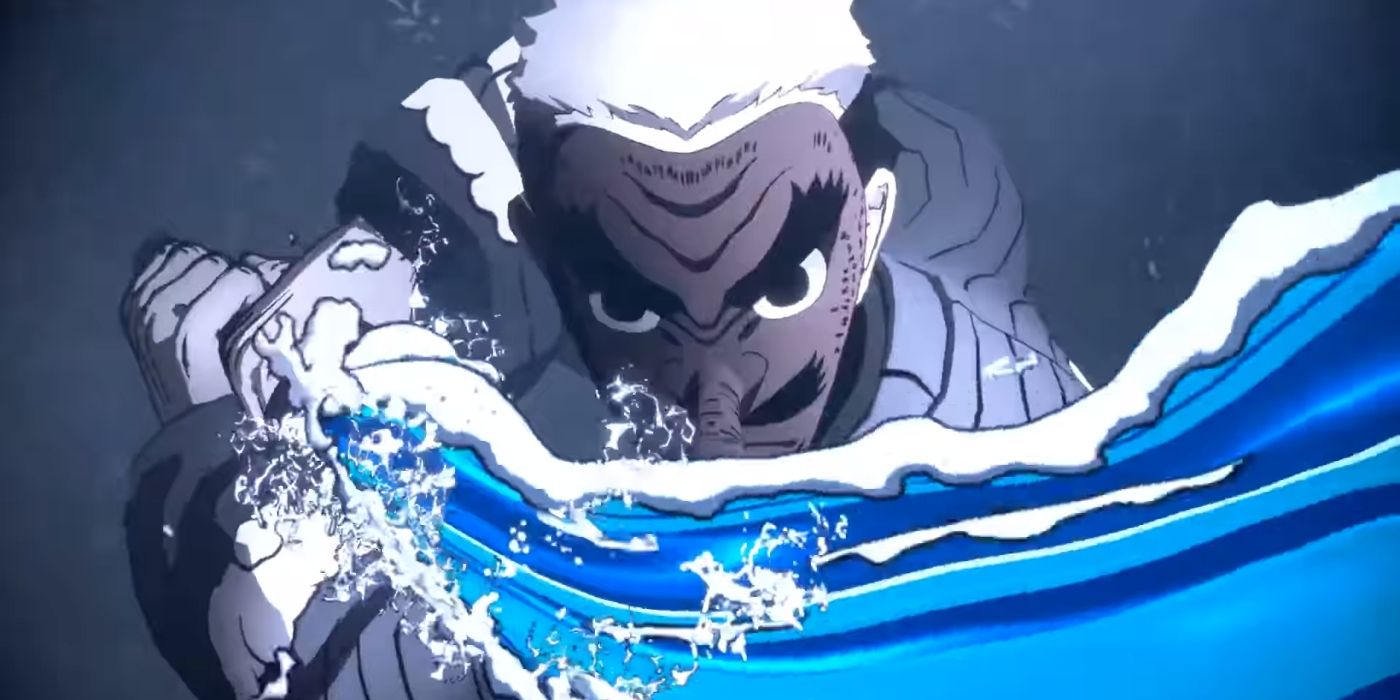If there’s any developer who can be trusted to put out a stellar licensed anime game, it’s CyberConnect2. Time and time again, the studio has proven itself to be among the best in the industry when it comes to making action-packed games that can wow fans. CyberConnect2’s work on the Naruto Ultimate Ninja Storm games needs no introduction, with its usage of heavy cell-shading alongside fluid animation making the series a highly enjoyable way to experience Naruto in a compressed form. Its recent work on Dragon Ball Z: Kakarot also demonstrates its penchant for understanding the appeal of what it’s adapting, and preserving all the little details fans love.
Now, courtesy of Sega, CyberConnect2 has turned its attention over to the Demon Slayer franchise. Demon Slayer: Kimetsu no Yaiba – The Hinokami Chronicles is an arena fighter cut from the same cloth as the Ultimate Ninja Storm games, and it feels like the samurai equivalent to Naruto’s ninja action. All the parts that UNS fans love are back and better than ever, including an action-packed story mode that lets players immerse themselves in Demon Slayer’s world, industry-leading cell-shaded visuals, and an accessible but surprisingly deep combat system. The Hinokami Chronicles feels like it synthesizes the best parts of CyberConnect2’s past decade of work, and should please Demon Slayer fans looking to experience the shonen manga again.
The Adventure Continues
To a diehard Ultimate Ninja Storm fan, The Hinokami Chronicles’ Story Mode will feel like a best friend returning home from their travels abroad. The adventure fields implemented directly into the story modes of most numbered UNS games are back, accompanied by the Storyline menu used for UNS4’s story. Optional cutscenes adapting more parts of the plot called Memory Fragments will be unlocked as the player progresses, explores rural Japan, and completes side and main quests. There are also lesser demons to fight in some areas, complete with a special head-cutting mechanic. Some of the exploration sections feel like they borrow a little from the old Ubisoft Naruto: Rise of a Ninja game, which definitely adds some spice to the gameplay.
The main draw of Story Mode is its climactic boss fights. CyberConnect2 has not lost its edge in designing these encounters, with both playable characters and unplayable enemies engaging the player character in bombastic, often multi-part fights. Some of the bosses use attack patterns reminiscent of Asura’s Wrath, while others demand a unique approach from the player. As always, these major fights are topped off with CyberConnect2’s signature quick-time events. They can distract from the especially well-animated action happening behind them, but keep the player engaged in each battle’s climax. It remains to be seen if The Hinokami Chronicles can top Asura’s Wrath’s innovative QTEs, but it can certainly keep pace with the developer’s quality standard.
One early concern that Story Mode inspires is that this game may be too fan-oriented, to the point of shutting out players unfamiliar with Demon Slayer. The manga has a deliberately slow start, as Tanjiro Kamado is initially unequipped and untrained to actually fight demons. Thus, The Hinokami Chronicles begins its tutorial at the end of his training under Sakonji Urokodaki. This works for gameplay purposes and gives the player a justified tutorial fight. However, much of the emotional weight of the scene involving Tanjiro overcoming his limits is robbed due to the lead-up happening off-screen. Players can choose to catch themselves up on Tanjiro’s story by watching several Memory Fragments in the Storyline menu afterward, but this feels like too little, too late. How hard Demon Slayer’s emotional beats hit different people may vary wildly due to this approach.
A New Breed of Arena Fighting
The same can be said for the combat system itself. Demon Slayer: Kimetsu no Yaiba – The Hinokami Chronicles is an arena fighter like most of CyberConnect2’s fighting games, and that comes with a bad reputation. However, Ultimate Ninja Storm, Demon Slayer’s predecessor, is far from the average low-effort arena fighter. Developed by CyberConnect2 after almost a decade of experimenting with Naruto fighting games, this series began its own almost decade-long trek of testing different mechanics while cultivating a strong core. At first, it was all about resource management and skilled 3D movement, but eventually, a surprisingly deep assist character system developed and the community managed to find even more ways to fight. Now, Ultimate Ninja Storm 3 and 4 both have small but dedicated competitive scenes, and it looks like The Hinokami Chronicles is primed to build its own.
With the jump from Naruto to Demon Slayer, it seems like CyberConnect2 has decided to reevaluate its gameplay formula and rebuild it for this new series. The assist system has become much simpler, and chaining different attacks is now much more intuitive. The chakra meter has been split into skill and special meters, and the old ki charge mechanic associated with anime games has been replaced by gradual regeneration and taking and giving attacks, respectively. Chakra dashing has also been done away with, and the dashing system has been compressed into a simple, one-button affair. Don’t be fooled by the altered mechanics, however, the core of precise movement, resource management, and blazing fast tag team action is still present.
In some ways, The Hinokami Chronicles is even more of a hyper-fighting game than the Marvel Vs. Capcom-like UNS. Combos are easier to improvise, and offense can become even scarier when super meter is used to enable Boost and Surge modes. UNS’ personalized Awakenings have been replaced by this two-tiered universal super mode that can be accessed whenever sufficient special meter is held. Boost increases speed and power, but Surge also confers infinite skill usage and various other benefits, enabling combos potentially more dangerous than level three Ultimate Arts.
To compensate, defense has also been strengthened; there are now multiple ways to break out of combos, all characters can shove while guarding (another nod to MvC), and, surprisingly, parry. Even without the more defensive benefits of the UNS assist system, it seems like rocksteady defensive play is still possible. Of course, there’s a time and a place for every strategy. Soon enough, The Hinokami Chronicles should unfold into a frenetic display just like Ultimate Ninja Storm before it and should evolve even further as time (and perhaps its series) moves on.
A Colorful Tapestry of Features
This anime fighting game holds a number of other attractions outside of Story and VS Mode. There are little challenges peppered throughout every mode, including Ranked online play, that net players Kimetsu Points. This currency can be used in the Rewards menu to prematurely unlock a variety of things that can also be unlocked by progressing the story and fulfilling certain criteria there. These rewards can range from profile pictures to stages, to music, and even to characters. The characters cost a hefty 4000 points each to unlock if players want to go down that route, but plenty of Story and Ranked play can produce sufficient points for such a path. It’s probably faster to just beat Story Mode, all things considered.
That said, there is one other mode that will reward Kimetsu Points to diligent players. Training Mode, not to be confused with Tutorials or the fighting game-standard Practice matches, offers a different kind of progression for spirited competitors to engage with. Every unlocked character has ten training sessions of increasing difficulty, where a player must defeat an increasingly vicious AI opponent under a time limit. There are various small challenges for each fighter that can also be beaten. Everything accomplished in this mode rewards Kimetsu Points, and a player who seriously works their way through a whole set of matches will probably leave stronger than when they came in.
Of course, with all this talk of features and gameplay, it bears repeating that The Hinokami Chronicles is a gorgeous game. Demon Slayer’s art style lends itself perfectly to CyberConnect2’s cell-shading expertise, and the different special effects associated with the cast’s fighting styles are just as lovingly rendered as their pairing-specific win screens. Halting progress for a little while to enjoy the Ultimate Arts, QTE scenes, and other animation flourishes will come as a natural part of playing this game. The English and Japanese voice acting also add a lot to everything, whether it’s a fever pitch fight or scrolling down the main menu. That’s just another reason, on top of the extra demon characters and platform-specific 60 FPS patch coming after launch, to give The Hinokami Chronicles a shot. Read every menu and instruction possible, play against humans and AI, and above all, have fun, and the arena fighter demons should be slain.
Demon Slayer: Kimetsu no Yaiba – The Hinokami Chronicles releases on October 15, 2021, for PS4, PS5, PC via Steam, Xbox One, and Xbox Series X|S. Game Rant was provided a PS4 code for this preview.




